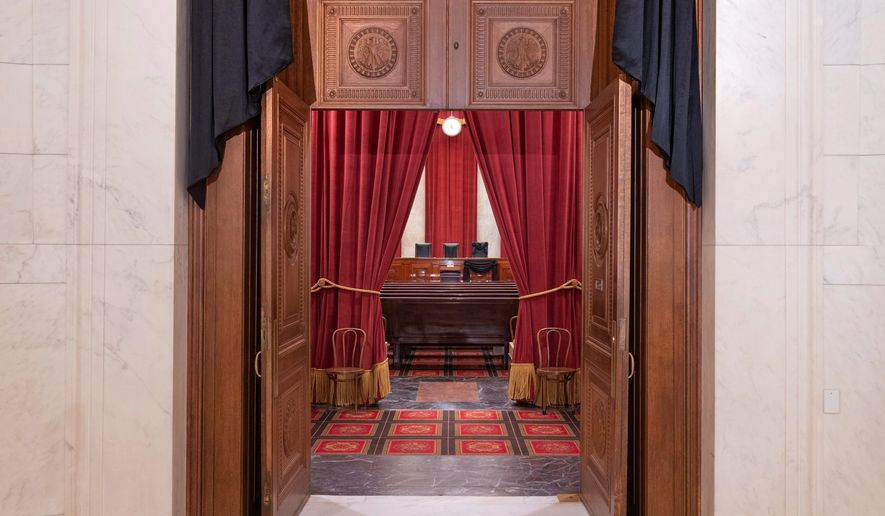Legal analysts say overturning Roe v. Wade, the 1973 decision that legalized abortion, isn’t the only way a conservative-led Supreme Court might cut access to it.
More than a dozen pending federal cases on rights and restrictions to abortion only indirectly concern Roe and could soon be appearing on the Supreme Court’s docket.
The U.S. Court of Appeals for the 6th Circuit has yet to rule on Ohio’s ban on abortions of fetuses with Down syndrome, which the state’s attorney general defended earlier this year.
And the U.S. Court of Appeals for the 5th Circuit is considering a Texas law that strikes down an abortion procedure known as dilation and evacuation, typically used in the second-trimester of a pregnancy.
Meanwhile, two other cases are pending petition before the Supreme Court this term:
• Food and Drug Administration v. American College of Obstetricians and Gynecologists concerns whether abortion medication needs to be distributed only in-person by a health care provider, even during a pandemic.
• Dobbs v. Jackson Women’s Health Organization addresses the constitutionality of a Mississippi law banning abortions after 15 weeks of pregnancy except in cases of medical emergencies or severe fetal abnormalities.
“That’s [Dobbs v. Jackson] where I would expect them to go,” said Teresa Stanton Collett, a law professor and director of the Prolife Center at St. Thomas University in St. Paul, Minnesota. “Why are we letting abortion clinics and abortion doctors say they’re representing the interest of their patients when they’re attacking health and safety laws?”
Pro-life and pro-choices advocates anticipate a Supreme Court challenge to Roe if the Trump administration replaces the late Justice Ruth Bader Ginsburg, who died Friday of pancreatic cancer at age 87.
“Her seat should be filled by a Justice who carries forward the vision of a fair, equal, and just society under law,” Nancy Northup, president and CEO of the Center for Reproductive Rights, said in an emailed statement to The Washington Times.
A post-Roe America, legal experts say, would see a patchwork of laws restricting and allowing various procedures. More than a dozen states — such as New York, Massachusetts, Virginia and Montana, have sought to preserve expand abortion rights in recent years. Likewise, 24 states — including Texas, Pennsylvania, Wisconsin and the Dakotas — have sought to ban or severely limit abortions, according to the Center for Reproductive Rights.
“This is one of the most important times that we have had for everyday people to stand up,” Rep. Alexandria Ocasio-Cortez, New York Democrat, said Sunday at a press conference. “We all need to be more courageous and we all must act in unprecedented ways to make sure that our rights are stabilized.”
Abortion rights supporters note that public polling is higher than at any other point in three decades for Roe v. Wade. Last year, fully 6 in 10 Americans said abortion should be legal in all or most cases, having rebounded from below 50% in 2009, according to Pew Forum Research.
While many progressives fear the Roe firewall in the nation’s highest court could be breached, conservatives have been stymied before at the Supreme Court.
In June, Chief Justice John G. Roberts Jr. joined the four liberal justices to strike down a Louisiana law that would have required credentialing privileges of doctors performing abortions at local hospitals. Chief Justice Roberts said the ruling was in accordance with legal precedent, noting the court had struck down a nearly identical law in Texas just a few years earlier.
However, court observers point out that the chief justice wrote in his concurring opinion that “neither party has asked us to reassess the constitutional validity” of the 1992 abortion case, Planned Parenthood v. Casey, in which the court found a federal standard prohibiting any states from passing laws that cause an “undue burden” upon people seeking an abortion.




Please read our comment policy before commenting.